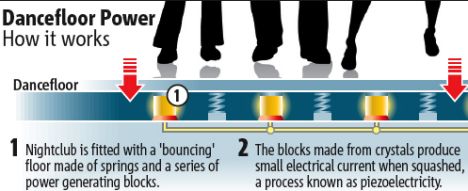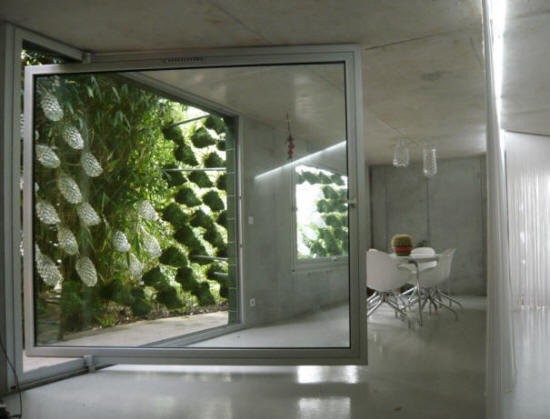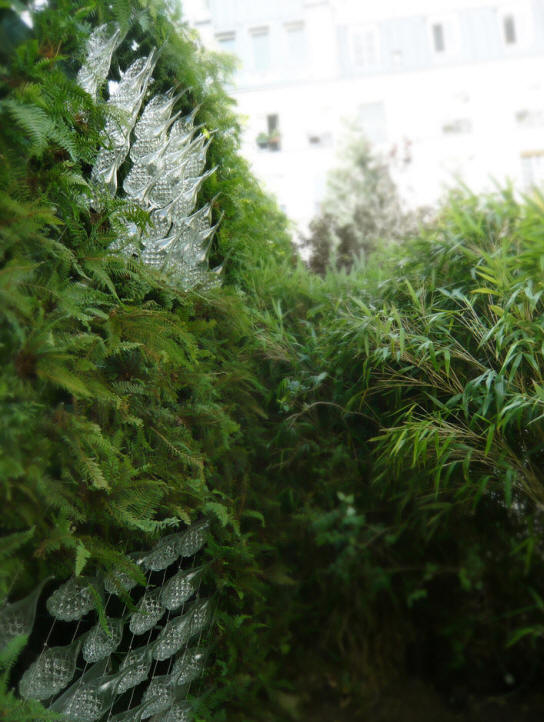Previously published this on my other blog that is based on education and school spaces,
The Future is Yours. I recently completely the
Classroom of the Future Competition by Architecture for Humanity and Open Architecture Network with Ms. Miles 6th Grade Class at George Washington Carver Middle School in South Central LA. These kids are amazing. I had everyone draw me a plan. They also know how to draw sections and elevations.

Based on a month long collaboration with the sixth grade class of struggling middle school with low performance statistics in a rough urban neighborhood, this design presents the collective predictions and prescribes suggestions for a better learning environment, directly from those who hunger for the betterment of their future. The classroom of the future needs to be an environment which perpetuates active symbiosis; a place where students are teachers, teachers are students, the space is a teacher, and the space is a learner. Spaces need to be smarter as the students will teach the classroom how to better appropriate itself to them. Without a doubt, technology needs to be more efficiently infused with the learning process.

Let's start with the immediate. Let's start with the immediate experience. In our design, the XO2 Laptop by One Laptop Per Child is available to each student in the class. Working with their software, Sugar, as well as Windows, the students are able to integrate themselves with the lesson plans via the technology.Being a few inches away from the material as it appears on the screen, instead of squinting from the back of a classroom to read the chalk board, students can remain engaged and intellectually stimulated throughout the lesson while having the liberty to posit their own contributions to the lesson through the same technology. This also cuts down on the costs and waste of paper handouts. Students can turn in there homework electronically to maximize efficiency. The laptops will all be connected to a live feed or chat room set up that is displayed on a Smart Board at the main focal space of the room where their work can be displayed instantly to each other, connecting each student in the classroom and unifying them in the material while promoting intellectual diversity by exposing them to the various opinions of their peers. The children will also have ear phones, allowing them to listen in

when podcasts are integrated into the curriculum. Wireless Internet is a consistent and necessary amenity for the students. By maximizing the educational potential of these existing conditions, teachers can simultaneously collaborate with classes around the world and provide the opportunity for students to discus and learn about other cultures first hand from fellow students around the world. If the laptops are unavailable, the integration of cell phones and social networking services such as Twitter or Ning can also introduced into the curriculum to act in a similar capacity. With the cell phone, the student can text message their answers or questions to display them at the front of the room. If a Smart Board is out of the budget, a projector attached to the teacher's laptop can fill its role. This promotes group learning from everyday actions that an educator might find to be traditional distractions. If the student is apt to text messaging about social happenings, then they would also be apt to text message about their answer to a question posed the board. This promotes healthy intellectual discourse and does not deter students from learning but rather encourages the use of everyday, attainable technology in their learning environment in a similar capacity to the technology's use in the professional world of which these students hope to one day be productive members. Due to the nomadic nature of laptops and other hand held communication devices, the classroom lends itself as a flux of striated and smooth spaces. All spaces are activated by the inhabitant's (students' and or teacher's) presence and are re-arrangeable and modular.

The space attempts to appeal to all types of learners: the visual, auditory, kinesthetic. There is a spectrum of place where the students learn, relaxed space to rigid space. Relaxed space has beanbag chairs or lightweight couches that can be moved for group or individual work. This area, or the break out space, is a place where students can feel at home in the classroom. The beanbag chairs are constructed out of recycled materials as are most of the objects in the space. If local materials are more economical and sustainable, they will be employed into the classroom. The break out space is also acoustically insulated so that students can come and study and read to stimulate themselves and to erase the stigma of "boredom" in the classroom. Boredom is a frequent complaint of students in the classroom. From existing in a media overload culture, it is hard for most to concentrate without multiple stimuli. The students are not necessarily afflicted with Attention Deficiency but instead simply require multiple stimuli to concentrate, absorb, and question the information they are intellectually ingesting. Carpet from recycled materials defines the space as well as brings a sense of homeyness to it, as well as a hearth or fireplace for the students to congregate around. A small satellite library with physical books chosen by the students and access to digital libraries and A Smart Table will also help to amalgamate the intellectual and informal cues of the space. The rigid space is similar to a traditional classroom setup with desks and chairs yet the desks are table units with at least two students to a unit. Each student has a partner to collaborate with throughout the term.

The tables can then be combined to make a classroom in the round for better discussions or even larger groups. Group learning encourages participation for living in a global society with the understanding that multiple perceptions and actions affect others. An area for recycling and sustainable energies in action encourages students to learn and live with an ecological conscious. So far all of the above can easily be included in a retrofitting project at an existing school.

The classroom needs to be integrated with natural elements to inspire the students with real life as well as digital influences. Opening to a classroom-specific outdoor space with access to an edible garden or edible green wall as a product of the space allowance will add to the curriculum and nutrition of the students. The incorporation of a water element with living fish that are the responsibility of the students lends itself to hands on science explorations and lessons. For the truly ambitious school that is dealing with overcrowding, organic and living construction can alleviate the use of the "temporary classroom." By using controlled cultured plant growth, the skin of the classroom is living and changing. The structure of this growth of living materials such as native or non-invasive trees or shrubbery uses a prefabricated system to direct its form.

The possibility of this plant as a nutrient supplier, aka an apple or a fig tree, offers healthier strategies for the student suggested snack and soda machines. A sitting area outside with a natural moss or grass lends itself as the setting of an outdoor classroom. Composting and water harvesting are also part of the outdoor curriculum. The school, if not the classroom itself, will obtain part of its energy from solar panels and insulate itself with inhabitable green roofs.

As per request of the students, the classroom should have direct access to the restrooms with efficient Grey water toilets. The main reason for this was that other students use their opportunity to go to the restroom to skip class and socialize. With this program shift of restrooms reintroduced into the classroom program, the area of the hallway outside the classroom is not longer just a through space and can then be augmented with other small niches for breakaway and socializing areas. Socialization does not have to be frowned upon and should be thought as part of the curriculum. Thus socializing will not be seen as a distraction from learning but a method of learning itself. Another important factor is the introduction of teacher-specific space. At the end of the day, the teacher is the one encouraging and inspiring the students to try harder. Teachers also deserve better spaces and their own breakout rooms and an inviting teacher lounge that is not just a dark room with few chairs and a microwave. An overall design motive is to have as much daylight as possible with out over heating the space. Larger windows and glass garage doors can be added to existing walls. When applicable, light wells to the sky similar to James Turrell's Sky Space pieces can leak sunlight from above. Shading and water protection is also provided. Other than day lighting there are low hanging LED lights equipped with proximity sensors so that when a student is near or below it will turn on.
All in all, the classroom of the future should be comfortable and a place that is more attractive and safe than the streets. School can be a fantastical place where the walls are filled with living plants instead of bars. They have the power to provoke the minds of the students and cultivate their ideas, but only if the space is inviting and receptive to creativity and cooperation. The space has to allow for itself to be occupied or claimed by that group of students and reclaimed by the next. The classroom cannot deny its previous history by being sterile but can celebrate learning as a compilation. The students requested clean spaces but clean does not have to mean sterile. Due to the context of the urban school, a graffiti wall should be placed in each classroom where students have permission to tag on designated areas. Graffiti will be seen as art and not as an act of vandalism. Thus, the classroom needs to reflect the community in which it exists while creating an intellectually stimulating and safe community within itself.
 (What about carpel tunnel? Arthritis? mmm) This clever gadget can be placed in your backpack or purse or strapped to your bike or kayak and derive the same energy. You can even use it while standing on the subway or bus, great way to relieve nervous habits and boredom. This 9 ounce 9 inchx1.5 inch device just plugs into your phone, MP3 player or other device directly into the PEG via USB cable. Then just start moving. Tremont claims that if everyone with portable devices used the PEG for an hour every day instead of plugging into the grid, enough energy would be saved to power 21,000 households for a year. Pretty impressive, right? Imagine if we took that to power the things in your house. Not just while your bored or while your watching tv, you could power your house every time you walk around.
(What about carpel tunnel? Arthritis? mmm) This clever gadget can be placed in your backpack or purse or strapped to your bike or kayak and derive the same energy. You can even use it while standing on the subway or bus, great way to relieve nervous habits and boredom. This 9 ounce 9 inchx1.5 inch device just plugs into your phone, MP3 player or other device directly into the PEG via USB cable. Then just start moving. Tremont claims that if everyone with portable devices used the PEG for an hour every day instead of plugging into the grid, enough energy would be saved to power 21,000 households for a year. Pretty impressive, right? Imagine if we took that to power the things in your house. Not just while your bored or while your watching tv, you could power your house every time you walk around.



















